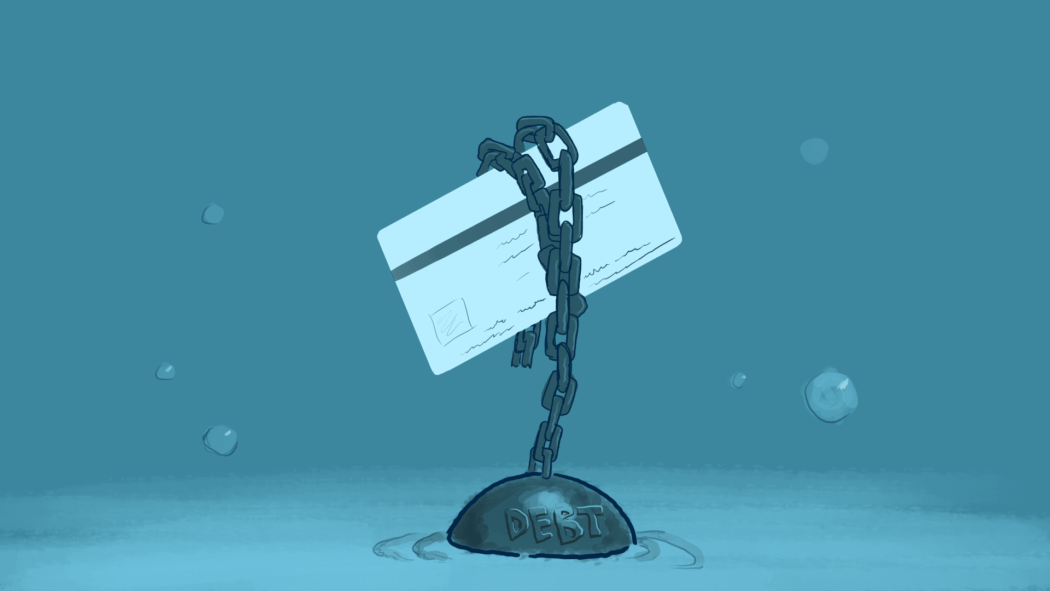Opinion: In college, credit cards are not for all
Credit cards are a straightforward method of building credit, but are not one size fits all. Getting a credit card during college can be a great investment for your future but should be approached with caution.
There are two basic types of payment cards: credit cards and debit cards. Both cards physically look the same but have different functionality; a debit card allows you to spend the money you have already put into the bank, while a credit card allows you to borrow money from the bank to build credit.
Building credit helps your credit reports and scores, which show banks how good you are at paying back loans so they will be inclined to give you lower interest rates and better deals on future housing or automobile loans.
Credit cards can be intimidating and often have skepticism attached to them. Students worry about accumulating debt, spending beyond their means and paying outrageous interest rates.
“All students shouldn’t get one,” said Alena Johnson, a family finance professor who has taught more than 22,000 Utah State University. “You should get it only if you can use it wisely to build credit.”
Johnson also said it is easy to get behind on payments when you are trying to work while also in college, which is one of the requirements for getting a credit card.
If your goal is to build credit, Johnson recommends installment loans like the ones for cars. They are a great way to build credit and are the preferred method by FICO, or the Fair Isaac Corporation, for building credit.
FICO scores are your score of creditworthiness between 300-800, with 800 being the best. About 90% of loan agencies use FICO, so it is in your best interest to keep a good FICO score. This can be done by paying bills on time and reducing the amount of debt you owe.
If you pay off your credit card every month (which is highly recommended), then you do not have to pay off interest and worry about going into debt. However, that is far easier said than done.
The average credit card balance is $6,506. Studies also show you are more inclined to spend more money on a credit card than a debit card. Credit cards can easily get out of hand and can end up working against your best interest.
Credit unions — which are non-profit organizations with better interest rates but are ultimately inconvenient — and banks — which are for-profit and are more convenient — are better places to get a credit card, as opposed to online banking and store cards which have higher hidden fees.
College students can be enticed by retail credit card deals but should avoid them at all costs. The immediate benefits are outweighed by the consequences. For instance, this past summer, Nordstrom offered $60 in-store credit when you sign up for a credit card. This at first seems like a deal. Shoppers get $60 off your purchase that day, and get points for shopping to be used on future purchases.
However, the points only apply to in-store purchases, and the rates are the very outrageous fees students feared; 25% interest rates, and up to $40 late fees. Using the card infrequently, and forgetting to pay it off would destroy your credit. As a college student, the risk is not worth the possible reward.
Banking options in Logan are Chase Bank, Wells Fargo and Zions Bank to name a few. Companies tend to have student credit cards, with unique benefits such as no credit card history needed and bonuses for paying on time. USU has its own credit union based on campus.
USU Credit Union is partnered with Goldenwest Credit Union. Given that Goldenwest is a Utah-based company, it allows students accounts to stay active even after graduation. With the USU Credit Union, students can start an account with no credit history needed (just verification of income) making the process young adult friendly.
Nathan Frost, a financial services representative at USU Credit Union, spoke about the benefits of credit cards for USU students. Given the early marriage age for many students here, credit building young is important for near-future investments like houses and automobile purchases.
For students having doubts about credit debt, there are ways to pacify those doubts. Frost said to stay under 30% utilization. Utilization is how much of your credit card do you use with respect to your credit limit. For example, if your credit card limit is $1000, only use $300. It supplies less opportunity for overcharging your card and less risk.
Johnson had a contradictory perspective of credit cards. Because credit card utilization affects credit scores, the higher the utilization, the worse it reflects on your credit. Johnson mentioned experts’ recommendation of 10% or less utilization.
“It is better to have no credit than to have bad credit,” Johnson said.
Credit.org cautioned to only use credit cards in emergencies and to remember that the money borrowed is money that must be paid back. Also, only one credit card is needed. More only adds risk and puts the very credit you are trying to build in danger. Look for cards with no annual fees, a low limit and low accident fees, such as overdue payments and overdrafts. Ensure you know the agreement you are signing when getting your first credit card.
Credit cards are not meant for all students. While there are pros to getting a credit card (protection against unauthorized charges, rewards and credit building), there are also drawbacks. The risk towards your credit and your fiscal responsibility are two factors to consider before signing the dotted lines of your card agreement.
Sara Prettyman is a Maryland-born-and-raised sophomore. She’s majoring in applied mathematics and loves drawing, running and reading.

